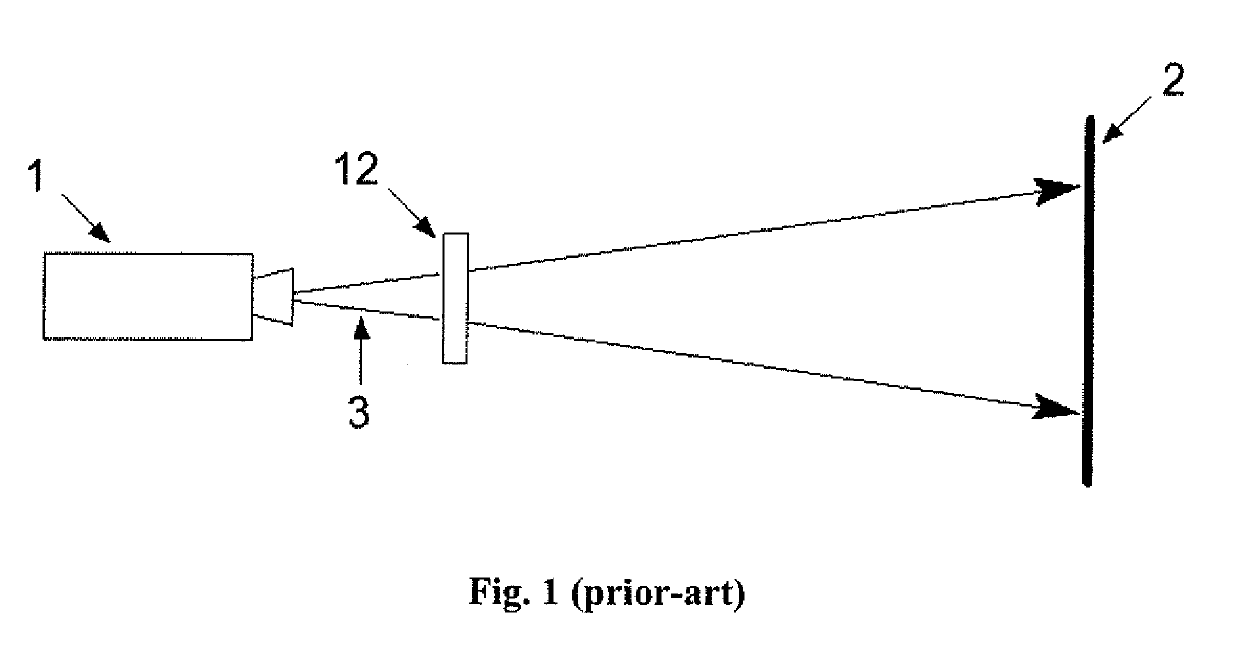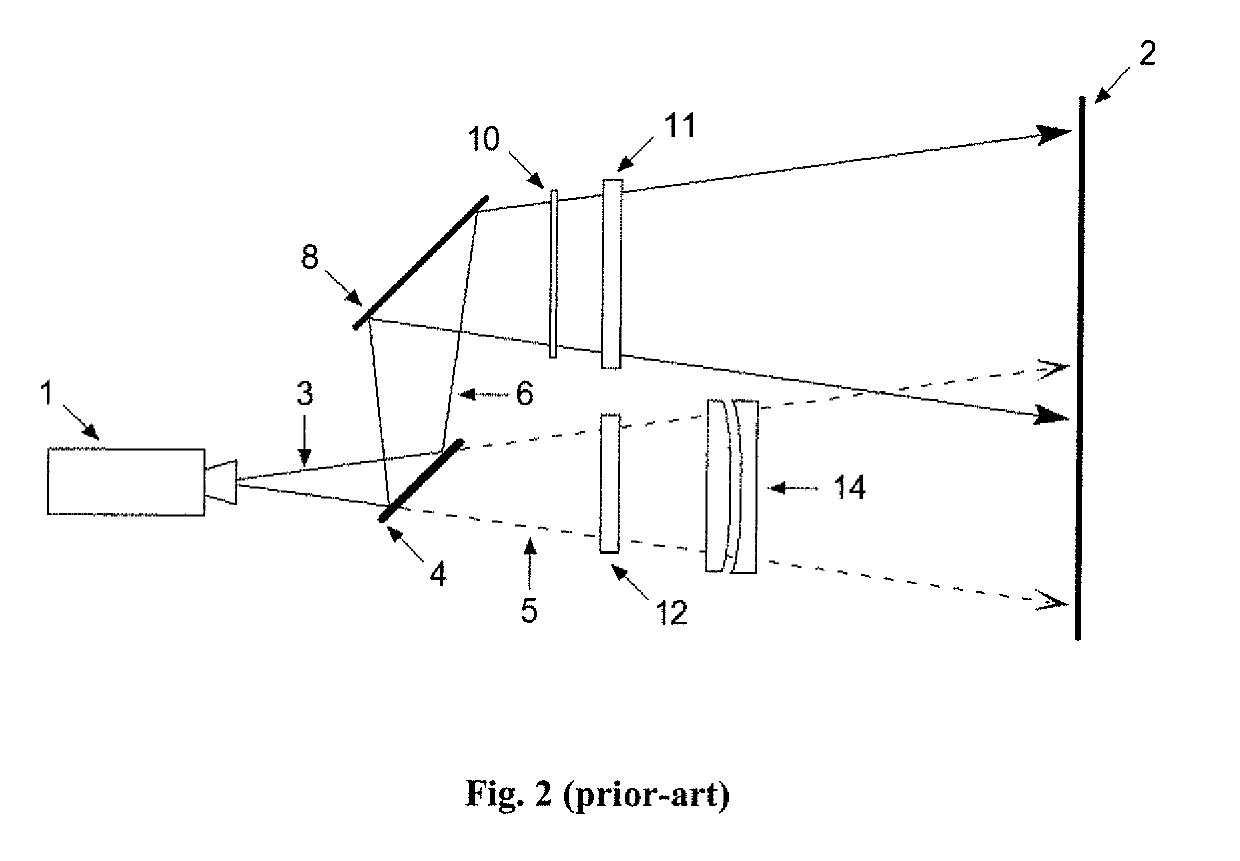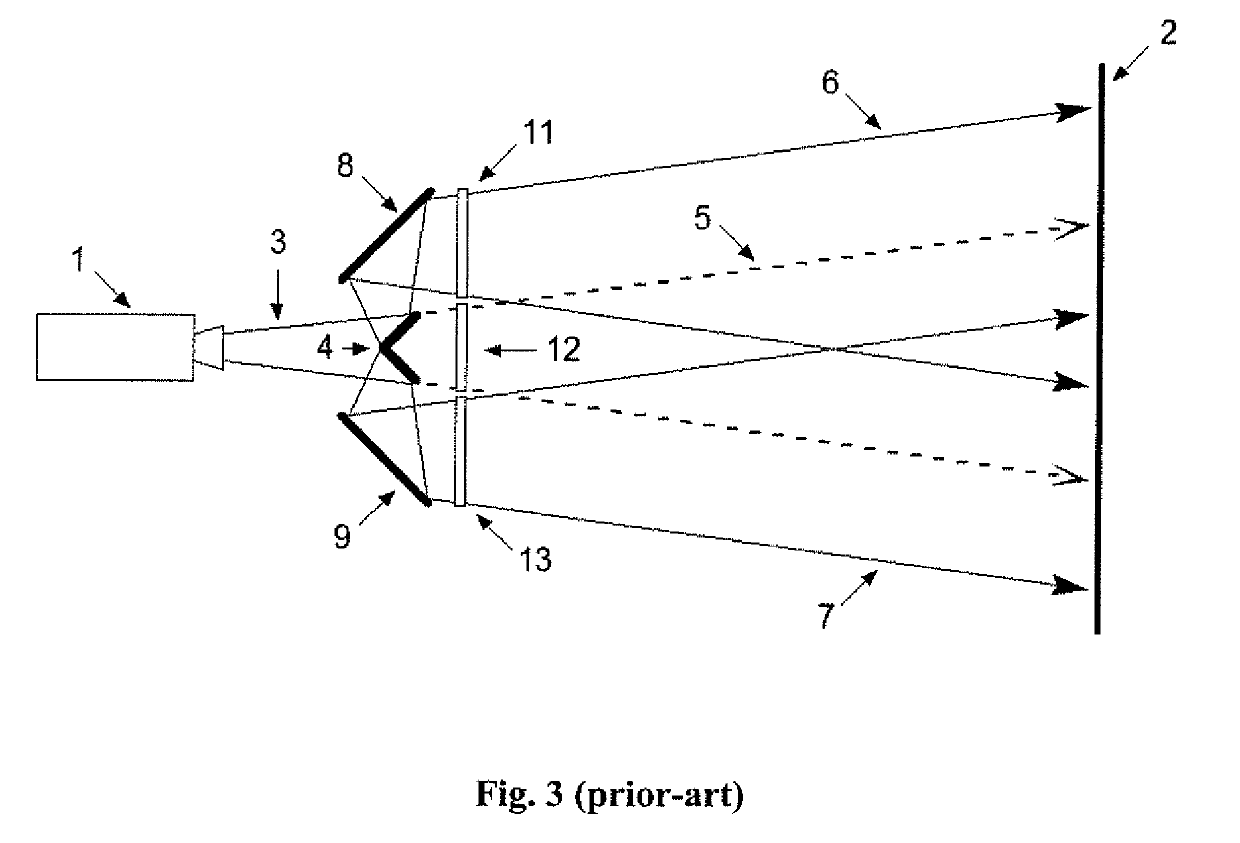Stereoscopic three dimensional projection system with short throw ratio
a three-dimensional projection and short throw ratio technology, applied in the field of stereoscopic three-dimensional projection systems with short throw ratios, can solve the problems of reducing the overall optical light efficiency of said single image, reducing the size of optical components, and reducing the brightness of on-screen stereoscopic 3d images, etc., to achieve the effect of improving image quality and on-screen homogeneity, and short throw ratios
- Summary
- Abstract
- Description
- Claims
- Application Information
AI Technical Summary
Benefits of technology
Problems solved by technology
Method used
Image
Examples
Embodiment Construction
[0034]FIG. 1 shows a time-multiplexed stereoscopic 3d projection system based on a single image-beam architecture according to the state-of-the-art where a polarization modulator 12 comprising a stack of one or more liquid crystal elements (not shown) is placed directly in-front of the lens of a projector 1, such as a 3-chip DLP digital cinema projector or otherwise.
[0035]The projector 1 generates an incident image-beam 3 comprising a succession of alternate left and right-eye images at high frequency of typically 144 Hz and said polarization modulator 12 is typically arranged so as to impart a first circular polarization state to all left-eye images and a second circular polarization state to all right-eye images respectively, with said first and second circular polarization states being mutually orthogonal.
[0036]Thereaftr, said left and right-eye images are focused onto the surface of a polarization-preserving projection-screen 2 such as a silver-screen or otherwise, thereby enabl...
PUM
 Login to View More
Login to View More Abstract
Description
Claims
Application Information
 Login to View More
Login to View More - R&D
- Intellectual Property
- Life Sciences
- Materials
- Tech Scout
- Unparalleled Data Quality
- Higher Quality Content
- 60% Fewer Hallucinations
Browse by: Latest US Patents, China's latest patents, Technical Efficacy Thesaurus, Application Domain, Technology Topic, Popular Technical Reports.
© 2025 PatSnap. All rights reserved.Legal|Privacy policy|Modern Slavery Act Transparency Statement|Sitemap|About US| Contact US: help@patsnap.com



